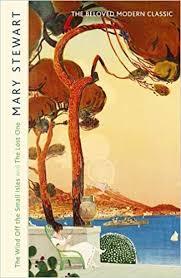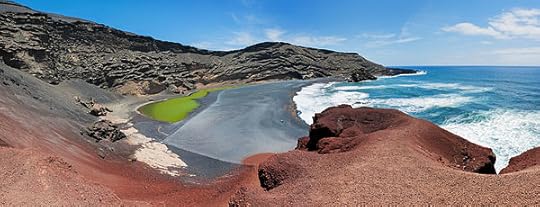Recent reading: The Wind Off the Small Isles by Mary Stewart
I used to be a big Mary Stewart fan, though I haven’t re-read anything of hers very recently. (Or hadn’t until this past week.) As you may know, Mary Stewart wrote about 14 romances, kind of mystery-thriller-romances, as well as the Merlin quadrilogy and a couple of associated novels in that world plus three YA stories. But then lately I realized there were two novellas of hers I’d never read of hers, collected in a book called The Wind Off the Small Isles. Great! I said, and added that to my wishlist. Whereupon it appeared, not very much later by my standards, on my Kindle.

The book has a foreword by Jennifer Ogden, Mary Stewart’s niece, who refers to the “extraordinary descriptive power of her writing.” That’s so true. I don’t think I noticed that consciously when I first read her books ages ago, and then eventually what I noticed most clearly was the rather dated helplessness of her female protagonists, always needing to be rescued by the male love interest. Of course Mary Stewart was writing quite a few decades ago, in the fifties and sixties, so okay, whatever. But wow, now that I come back to Stewart’s work, the extraordinary descriptive power of her writing just leaps off the page. Evidently she always visited whatever setting she had in mind, which considering the many different settings she used in her novels means she was quite the adventurous traveler. “The Wind Off the Small Isles” is set on one of the Canary Islands, Lanzarote. Here’s our protagonist’s first sight of that island:
The island was every bit as wild and barren as I had imagined. The roads stretched, pitted and dusty, between ridges of black basaltic lava. The only tree was an occasional palm, the only hills the symmetrical cones of dead volcanoes, or, to the south, the great burnt ridges of the Fire Mountains, with the frozen black floods of lava filling the valleys between them. There was no grass. There were no woods. The villages were pure African – square flat-roofed houses painted white and ochre, set flat like little boxes on the baked earth. Above them, where one looked for minarets, the towers of the Spanish churches looked incongruous and foreign.
Strange and exciting, you would have thought, rather than beautiful. “Paradise” – no, never. But then it got you. You stopped the car on some deserted track they called a road and got out into the silent afternoon, the thick dust muffling even the sound of your footsteps. You stood looking at the long yellow fields, with their pattern of growing corn like ribbed velvet, the soot-black slopes honey-combed with pits each enclosing a fig tree in brilliant green bud, the burning range of volcanic mountains shouldering up in great sweeps of red against the dazzling sky . . . all of these made a tranquil and somehow intensely satisfying pattern of shape and colour in the pure air. It was beauty more than naked; beauty pared to the bone.
Now, I’ve been on recent volcanic islands and I don’t find them beautiful. Not when they’re this new. I’m thinking specifically of the newest tiny volcanic island that’s part of, or next to, Santorini in Greece. Bare and black, with nothing growing but an occasional twist of grass whose seed was unlucky enough to land on this inhospitable island, and extraordinarily hardy yellow-flowering plants of some sort. I don’t believe Lanzarote would be on my list of the top 100 places to visit, or honestly even the top 1000 places. But if I did plan to visit that island, I’d re-read this story to get in the proper mood to appreciate it and I’d be thinking “tranquil and somehow intense satisfying” as I stepped off the boat and looked around.
Here, according to Wikipedia, is the sort of scenery I might see:

Peaceful is one word, I guess. Also barren. However, fine, let’s say that you respond as did the protagonist of this novella and go with serene.
The story itself is, how shall I put this . . . okay, it is not quite too contrived, although it’s a near thing! The protagonist, Perdita, is the companion and aide to a successful novelist, so that part sounds as though Mary Stewart was using herself and her niece Jennifer Ogden as the starting point for the main characters. Then we move on to volcanoes and shipwrecks and caves – complete with cave-ins –wrapped up in a package with a good handful of startling coincidences. Beautifully told, though, with the most amazing description, and engaging enough to draw the reader along through the startling events, implausibly coincidental or not.
The other novella included in the book is “The Lost One,” a title I don’t understand as being lost is not really an important element in the story. The protagonist is again named Perdita, but other than the name there’s no connection to the protagonist of “The Wind Off the Small Isles” and I think it’s better to think of them as two different people and not look for any evidence otherwise, since there isn’t any. Again, beautifully told, with the plus that there’s a very good dog involved. In this story, though, the protagonist IS SUCH AN IDIOT, driving the plot forward with her deeply, eye-rollingly stupid actions in at least two moments, arguably three. There’s a flaw that matters. Too bad, and it’s a shame that Mary Stewart didn’t have someone look over her shoulder while she wrote this novella so they could say, “What, really?” at opportune moments. I do think it’s nearly always possible to come up with a decent justification for almost anything you want your protagonist to do without resorting to “Well, she’s a blithering idiot.”
That flaw notwithstanding, reading these novellas did put me in the mood to revisit Stewart’s other mysteries, so I borrowed my mother’s ancient copies of some of those. Probably the best of Mary Stewart’s novels – other than the Merlin quadrilogy, which is definitive in that subgenre imo – is Nine Coaches Waiting. However, the one I picked up was This Rough Magic, which I remembered almost nothing about, so it was nearly like reading it for the first time. It’s set in Corfu, and this time I was primed to specifically notice the description.
The bay was small and sheltered, a sickle of pure white sand holding back the aquamarine sea and held in its turn by the towering backdrop of cliff and pine and golden-green trees. My path led me steeply down past a knot of young oaks, straight on to the sand. . . . The bay was deserted and very quiet. To either side of it the wooded promontories thrust out into the calm, glittering water. Beyond them the sea deepened through peacock shades to a rich, dark blue, where the mountains of Epirus floated in the clear distance, less substantial than a bank of mist. The far snows of Albania seemed to drift like cloud.
As a plus, the protagonist of this novel is not stupid. She gets into trouble for other reasons, quite a bit more believably and excusably. She even rescues herself, or very nearly, when it counts most. Lovely description, smooth writing throughout, plenty of charm, no reason a modern reader wouldn’t enjoy this novel. Plenty of Shakespeare references, too – Mary Stewart slipped a strong undercurrent of The Tempest into her story. I liked it a lot, again, and I expect I’ll go on re-reading Mary Stewart for a bit now that I’m in the mood, though probably not exclusively.
Have any of you read these romances? If not, how about the Merlin quadrilogy? If I were ranking all Arthurian retellings, which maybe I should do, Sterwart’s would be right at the top. She even made the tragic ending tolerable, largely by treating Mordred as a sympathetic character and also by the way she handled Merlin’s relationship with Nimue.
Please Feel Free to Share:











